Every story about the identification and recovery of a missing American service member is unique and precious. In their details, each one warrants separate, careful treatment. Yet, for all their diversity, a common element appears throughout these stories: the convergence of good fortune with perseverance. This combination certainly holds true for the remarkable account of First Lieutenant Loren E. Hintz (1917–1945) I learned about through communication with his grandson, Hans Wronka.
Loren hailed from Charles City, Iowa, and was one of three brothers who served in the Army Air Forces during World War II. Coming to the AAF with a striking set of interests, including conservation and American Indian dance, he had already published a collection of poems. After his training at Luke Field in Phoenix, Arizona, Loren received his orders. He was to be a member of the 86th Fighter Squadron, 79th Fighter Group, Twelfth Air Force, operating in the Mediterranean theater. In October 1944, Loren joined the squadron, which held an impressive prior record in North Africa, the Anzio beachhead, the Rome campaign, and operations in southern France. He would eventually fly a P-47 Thunderbolt on 64 missions with the 86th. The journey to Europe, though, meant leaving behind his wife, Gertrude, and their daughter, Gretchen, only nine months old. The separation was made even more painful by the fact that Gertrude was pregnant with a second child.
Himself of German descent, Loren mainly saw action supporting ground troops from the US Fifth Army against German units or attacking railways and bridges. Hans told me his grandfather’s 64 missions did not include a single confrontation with German aircraft, a testament to the decimation of the Luftwaffe by this stage of the war. During the next several months, as Allied forces in the Italian peninsula steadily drove northwards against stiff German resistance, Loren imagined a life for himself and his family after the conflict. According to Hans, Loren’s journals—he was a dedicated writer—show a clear awareness that combat was winding down.
That awareness seemed vindicated on April 9, 1945, when the terminal Allied offensive in Italy began. Loren’s squadron was assigned to the Santerno River region in northeastern Italy. Upon hearing news of the death of President Franklin D. Roosevelt on April 12, he expressed his good wishes that Harry Truman would be as fine a president as Roosevelt had. The final days of his life included a short trip to nearby San Marino with comrades. On April 18, he mailed his last letter to Gertrude.
Death in war is always an exceptional horror, no matter how just the cause. To die with a conflict’s end so close is just unspeakably terrible. Loren E. Hintz’s end has to be numbered among those especially painful losses.
Departing from Cesenatico Air Field, Loren flew his final mission on the hazy morning of April 21, 1945. It took place near the hamlet of Bagnarola, east of Bologna. At the tail-end of a section of four aircraft strafing and bombing German soldiers, he guided his P-47 to an elevation of about 800 feet. The low altitude he maintained, however, carried his fighter within range of German machine guns. A burst of fire brought down the aircraft. Other pilots recalled seeing a gigantic explosion but no plane. It is difficult to know whether the bullets or the crash claimed Loren’s life. He was just 27 years old.
Loren’s death sowed tragedy for an Italian family as well. The P-47’s crash set ablaze the home of Aristide Chiesa. His grandfather perished while desperately trying to save livestock caught in the crossfire between German and Allied positions. Aristide, who survived the events in a shelter, would prove a crucial source, over six decades later, in Hans’s search for the crash site.
These intertwined tragedies occurred on the cusp of ultimate victory. On that same morning, as Loren’s P-47 fell from the sky, Polish and American troops and Italian partisans entered Bologna. The beautiful city with its medieval university was finally liberated. A week later, communist resistance fighters captured Benito Mussolini as he tried to escape to Switzerland and executed him and members of his entourage. The next day, on April 29, Colonel-General Heinrich von Vietinghoff-Scheel, commander-in-chief of German forces, capitulated, the sole surrender to precede Hitler’s suicide.
On May 6, Gertrude, then living with her parents in New Hampton, Iowa, received a telegram from the War Department. Loren was missing in action. Over the succeeding weeks, she traversed the extremes of human experience. News of the Nazi regime’s complete capitulation, what Loren had envisioned, came on the 8th. The pendulum swing for Gertrude between exhilaration and deep anxiety gave way on the 1st of June to a profoundly personal joy. Their son Martin was born.
While Gertrude waited for further news, personnel from the American Graves Registration Service (AGRS) discovered the crash site outside of Bagnarola. They found Loren’s pistol and, from statements made by a chaplain present with the AGRS team, uncovered a few small, charred bones—“less than a cupful,” to be precise. A later interview with Aristide revealed that the Americans did not stay there long. Regardless, 1st Lt. Loren E. Hintz was officially designated as identified and recovered and his case was considered closed. Although Hans is sympathetic to the enormous task entrusted to AGRS, he rightly does not spare them from criticism. A complete recovery was not made.
With the work of AGRS seemingly completed, a letter from the AAF was dispatched to Gertrude. This missive realized her worst fears. It was the dreaded announcement confirming Loren’s death with all its formulaic condolences. Hans related how his grandmother for some time clung, as so many loved ones did, to the hope her husband might still be alive. She kept every letter Loren had sent her. The cherished correspondence was augmented by his journals, delivered to her as part of his personal effects.
With Gertrude’s approval, the few remains of Loren exhumed by the Graves Registration team would eventually be interred under a white marble cross at the American Cemetery and Memorial at Florence, Italy, with some 4400 other U.S. war dead. For over five decades, Loren lived on in his poems and in the many photographs collected by Gertrude. A footlocker in the attic contained these mementos, along with his uniform and medals.
In 2000, Hans Wronka, who had heard all the stories about his grandfather, seen the photos, and knew the poems, came across a webpage for veterans and enthusiasts with connections to the P-47 Thunderbolt. The site supplied information about veterans’ reunions and a message board. With this stroke of good fortune, Gertrude, Gretchen, and Hans decided to post a query seeking information about Loren E. Hintz. Soon, a man named Byron Webb responded. A P-47 pilot during the war, Byron had known Loren prior to shipping out for combat. Having himself flown more than 60 missions, he was shocked when the family informed him that Loren did not survive the conflict.
The family heard nothing more. Gertrude passed away a few years later. Still, it was a start, the beginning of a long process.
Hans did not give up. Five years later, after relocating from Alaska back to his home state of Minnesota, he tracked down a copy of the Missing Air Crew Report for Loren, a type of report the AAF always generated when its aircraft were shot down. The text provided some documentation about what happened on April 21, 1945. Soon thereafter, Hans experienced an even more fortuitous break. Having dinner and trading stories with a colleague, John Hunt, he found out that John’s father-in-law had also flown P-47s in World War II. That was only the first link in a chain of coincidences involving John’s father-in-law, Bob Johnston. Bob had not only trained with Loren but served in the 86th with him in Italy. He still looked back with fondness on his friendship with Loren.
John arranged a meeting between Hans, Hans’s mother, Gretchen Hintz Wronka, and Bob—this was Memorial Day Weekend 2005. Bob brought a gift of flowers for Gretchen, but the stories he shared were far more touching. From Bob, Loren’s descendants heard about what a kind person he was and how he longed to get back to his family. These details added to an image of the man the Hintz and Wronka families knew mostly from mementos and faded pictures.
Several years passed before any new breakthroughs. In early 2012, Piero Fabbri, a professional pilot and amateur researcher examining cases of shot-down American aircraft from World War II, saw Hans’s post from twelve years earlier. He reached out to Hans via email, knowing that his good but not perfect English would have to suffice. Hans overcame his initial skepticism about Piero’s intentions and corresponded with him about Piero’s case. Good fortune had once more opened a path.
That summer, Hans booked a trip to Italy. Traveling with his wife, Reva, and their oldest son, Gus, he met Piero. Piero went over with the Wronkas all the information his own investigations around Bagnarola had garnered. Based on eyewitness testimony to the crash, he believed Loren’s plane rested in a field owned by the Malvezzis, an eminent family in the region. Thanks to Piero’s efforts, the Marquis Malvezzi was won over. Hans and Piero could undertake their investigation on his property. The most special moment in this special trip to Italy, though, was the opportunity to fly the exact route Loren did on that April day. It meant everything to Hans to see what his grandfather had flown over in his last moments.
On Piero’s recommendation, Hans requested the Individual Deceased Personnel File (IDPF) for Loren. Although the wait lasted for more than a year, he finally obtained it and found plenty of helpful information about where the crash site could be. Gus, after some online searching, purchased an authentic battle map of the region, used by the American Army and dated April 1945, from a collector in the United Kingdom. Subsequently, Hans and Gus acquired aerial photos of Bagnarola from the U.S. National Archives taken within a day or two of Loren’s death. The material fleshed out new details about how the battle with the Germans played out.
This determination continued to pay off. Piero located Aristide Chiesa, who recounted his memories of where the P-47 hit the ground. With this key information, Piero then formed a partnership with a group of enthusiastic researchers and obtained an electromagnetic flow meter. Once they had it, Piero’s team carried out tests with the device on the land identified by Aristide. The survey indicated that something big and metallic was present about 15 feet below the earth.
On July 23, 2016, it all came together at the farm field near the Malvezzi estate. Three generations of the pilot’s family were present at the excavation. These included Loren’s two children, Gretchen Hintz Wronka and Martin Hintz, Hans, Reva, their two sons, Gus and Casper, and their daughter, Cecelia. Hans’ brother, Joe, arrived just in time to participate, as did Martin’s children, Dan, Steve, and Kate Hintz. The night before the excavation, they were treated to an astonishing honor. The Castle San Pietro Terme Chapter of the National Association of Italian Partisans held a ceremony in a Renaissance church, partially destroyed during the Second World War, where they inducted Gretchen and Martin as members.Recalling the common struggle of the Allied armed forces and the Italian anti-fascist resistance, the chapter played “Taps” and presented a wreath with a picture of Loren at the center to Casper and Cecelia who, as part of the ceremony, placed it at the foot of a large stainless steel cross.
This incredible ceremony served as a “premonition,” to use Gretchen’s words, for what transpired on the 23rd. The family had plenty of company. Eric Trueblood, an authority on the P-47 and the owner of AirCorps Aviation, a company in Bemidji, Minnesota, which restored aircraft from the Second World War, attended with them. Dozens of volunteers from the Italian non-profit group Archeologi ‘della Aria (Archaeologists of Aviation), recruited by Piero, assisted. Sensing something special at hand, a curious crowd of 100 spectators also gathered around the team and its equipment. Locals approached Gretchen and offered their thanks for her father’s sacrifice, which profoundly moved her. The dig, reconnecting people to the last days of World War II and the end of Italian Fascism, was a true event for the community.
The work of the backhoe produced immediately. First, one of the Thunderbolt’s .50 caliber Browning M-2 machine guns was unearthed with a rusty round still clearly visible in the breach. A little farther down, the casting of a lever used to raise the back wheel was retrieved. Eric quickly verified it–yes, this piece belonged to a P-47 Thunderbolt, like the one piloted by Loren. Next came hundreds of shards of aluminum, some burned, others intact. When the hole reached a depth of 15 feet or so, the team looked down on the engine. A Pratt-Whitney Dual Wasp R-2800, to be exact. Where there was an engine, a cockpit could not be far away. And, sure enough, glass from the cockpit shone through the dirt.
Subsequent digging disclosed astonishing things—flare guns, parts of a uniform, and shoelaces. But then the AdA team pulled free Loren’s dog tags. When they were exhibited, the crowd spontaneously cheered. Physical remains of Loren, the most fragile and precious items recovered from the excavation, came last. Loren had been found.
Malvezzi, involved with every step of the process, summoned a priest, who delivered a prayer and blessings for the dead. The mood, Hans recalls, was somber. He said he felt a feeling of loneliness that, in turn, yielded to comfort, knowing Loren and Gertrude were with him and his family. The moment had immense meaning. Buried 16 feet under the field for 71 years, Loren E. Hintz and his P-47 had been completely recovered this time. In finding Loren, Hans, his family and those who helped their efforts had discovered a bit of Loren in themselves.
Specialists at Dover Air Base, with the help of DNA samples from Martin, Gretchen, and Gretchen’s cousin, Faye Good, certified the identity of the remains. In Fall 2019, they will be placed in the grave with the white marble cross in Florence. All the good fortune and perseverance had returned results practically unimaginable when Hans started his search in 2000.
In telling the story of his grandfather, Hans imparts to listeners refreshing words about the undeniable role of luck. Yet good fortune alone did not bring about the discovery of the crash site of Loren’s P-47. Dedication and attention to minute detail were required. Hans also points to historical circumstances over which he had no control. The World Wide Web and email, he emphasizes, have aided this kind of investigation so much. In previous decades, researchers faced a far more difficult situation. Overall, though, Hans hopes, as he communicated to my colleague, Dr. Martin Loicano, and me, that people with missing loved ones never give up.
Jason Dawsey, PhD
Jason Dawsey, PhD, is ASU WWII Studies Consultant in the Jenny Craig Institute for the Study of War and Democracy.
Cite this article:
MLA Citation:
APA Citation:
Chicago Style Citation:
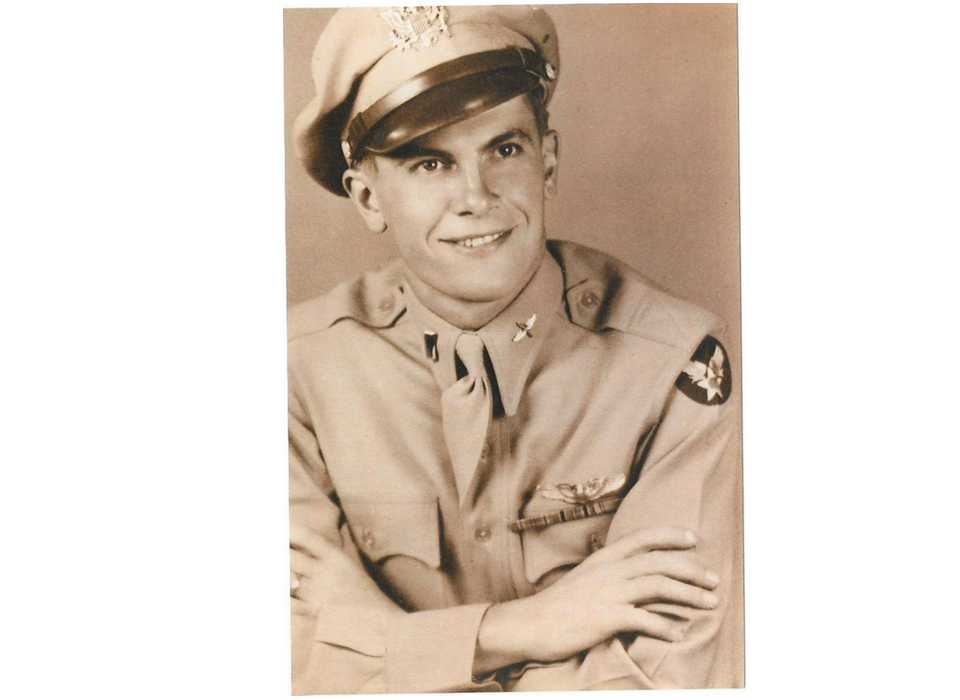
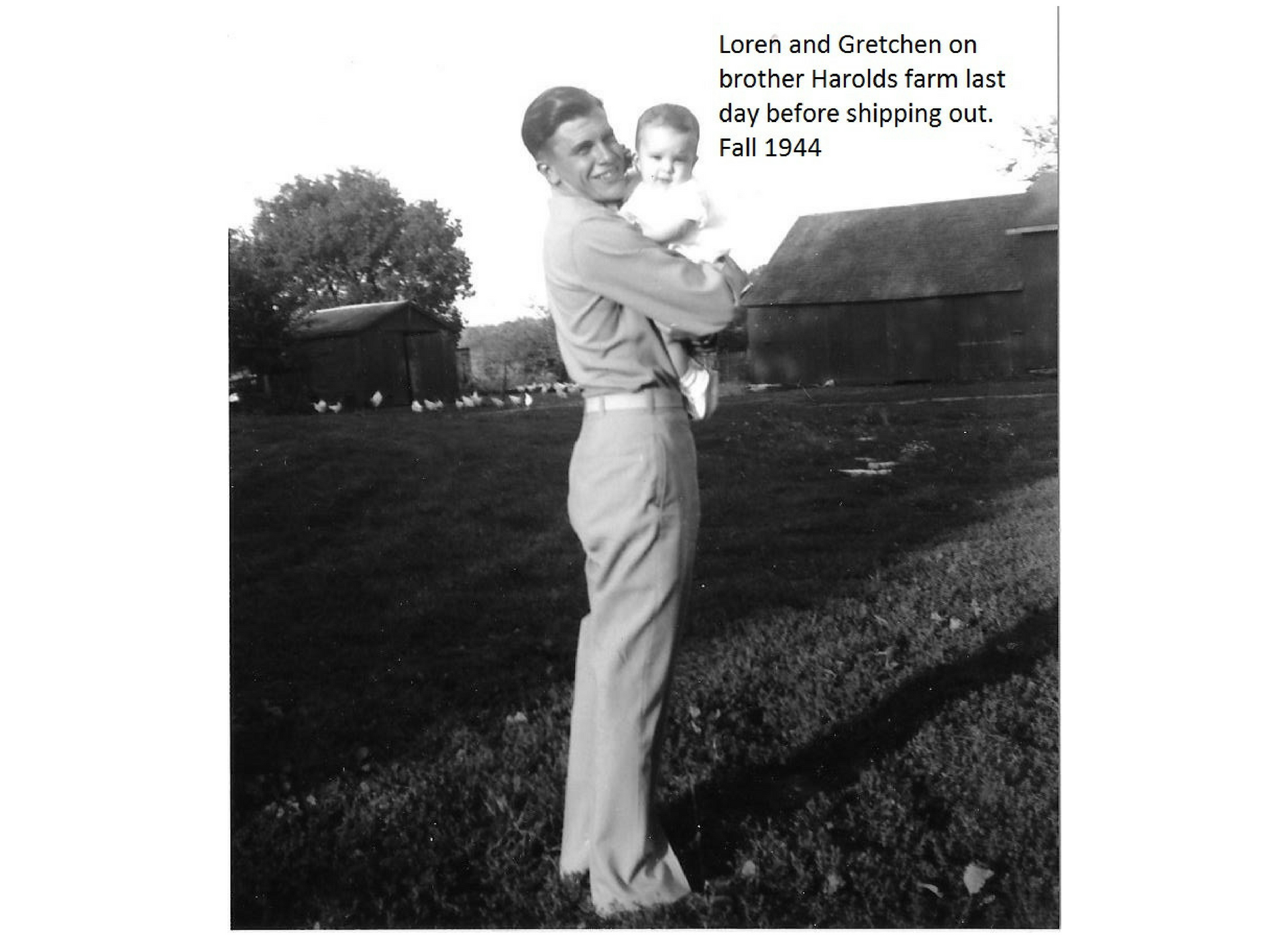
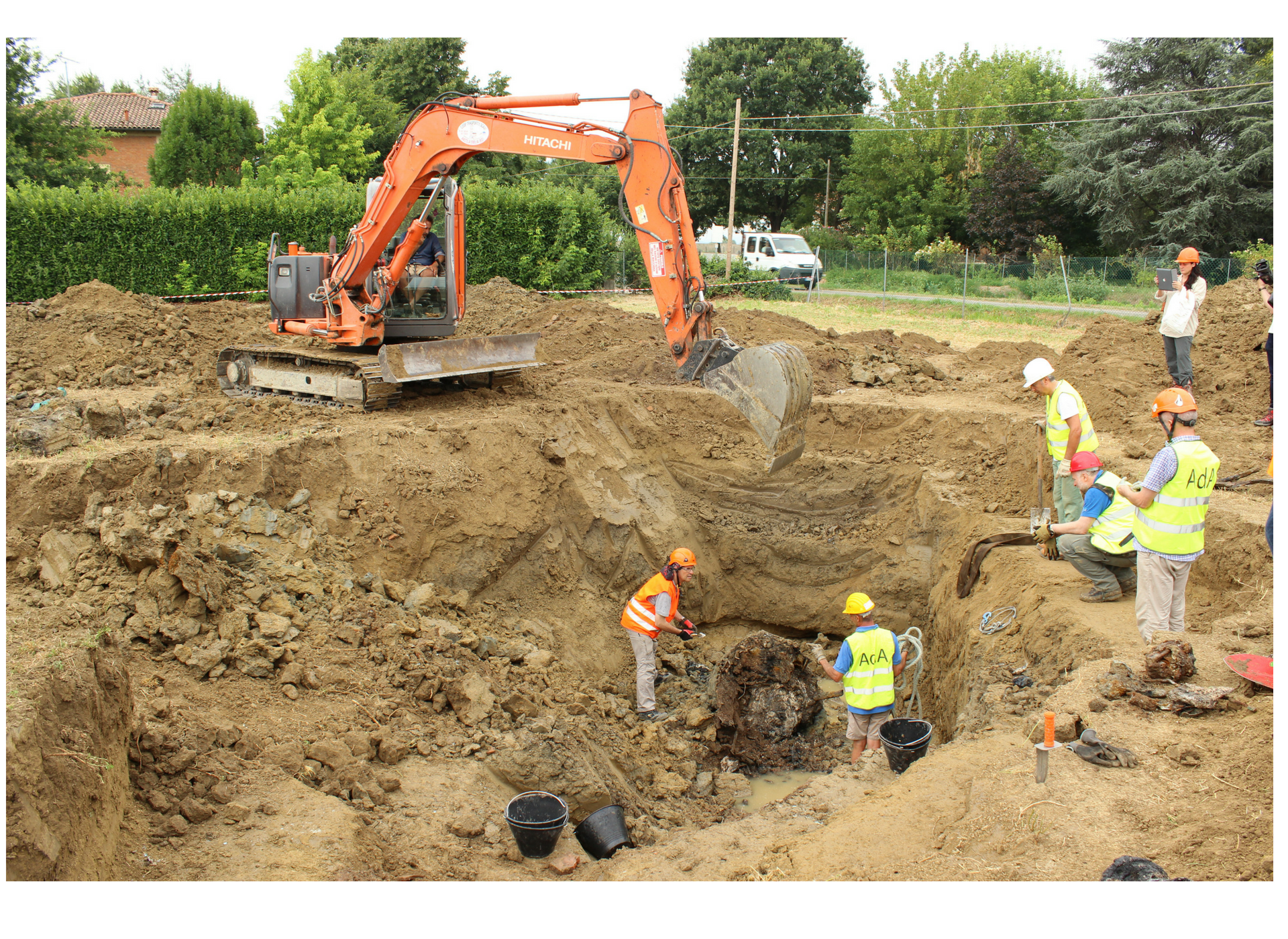

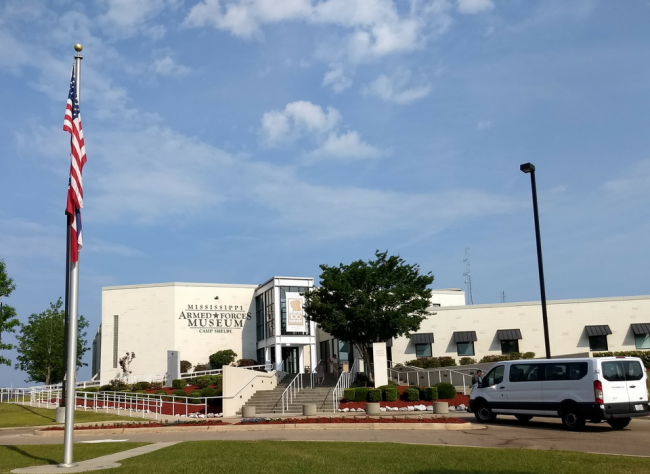
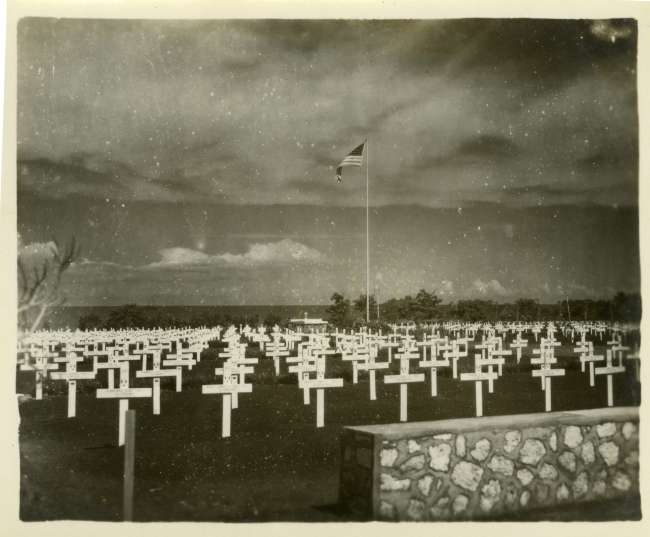



![Max Fuchs, New York City cantor, sings as Rabbi Sydney [sic] Lefkowitz, Richmond, VA, conducts the first Jewish services from Germany.](/sites/default/files/styles/max_650x650/public/2025-10/image1.jpg)



